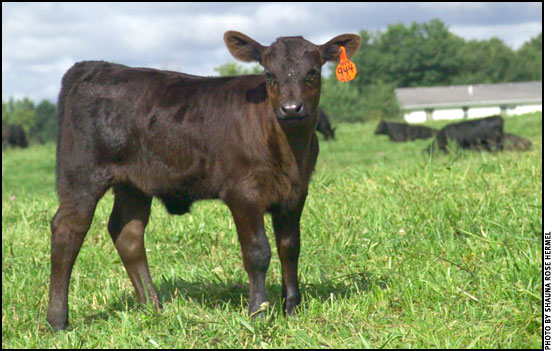
Tagging Techniques
Subscribers share their ideas for herd identification.
Last year, we posed a question to our Angus Beef Bulletin EXTRA subscribers: What type of numbering system do you use to identify your calf crop?
For example, in Editor Shauna Hermel's family herd, they use a three-digit number with the first digit being the year and the last two digits being the sequence of the calf of that gender born that year. This means that 907 would be the seventh heifer or bull calf born in 2009. They put the dam's tag number small above the calf ID number and color-code the tags by sire. Of course, a herd expecting more than 99 bull and 99 heifer calves would need to go to a four-digit calf number to use a similar system.
Many producers used more than one of these trends, and that explains why the number of responses adds up to more than 99. A few representative responses that used many trends are shown here.
Out of 99 responses, 79 producers used the three- or four-digit numbering system that included the birth year. There were variations that began with the year as the first number, followed by the sequence of calving, all or some form of the dam's number, or using even or odd numbers depending on bull or heifers. In some herds, producers used a number or letter to designate whether the calf was an embryo transplant (ET) or artificial insemination (AI) calf.
The dam's number was used by 37 of the producers. Producers used the dam's numbers to match calves and dams at a glance, and the dam's number on the calf's tag also helps producers see if a calf is suckling off of another female. It was also used to keep track of how long a dam has been in productivity by numbering the calves in sequence by dam's number (or letter), or see which calves are out of a dam's line.
Sixteen producers used the international ID letter, in addition to additional numbering systems.
Color coding was used by 26 producers, either for season of calving, by sire, by dam or by whether the calf was a heifer or bull.
Right and/or left ear tagging, used by nine producers, was used to easily distinguish the sex of the calf at first glance.
Many systems wrote dam or sire information and birth date on their tags, used a national electronic ID, double tagged or used brisket tags. Several used the same tattoo as their tags, too.
Thank you to all the producers who responded to the survey via email.

[Click here to go to the top of the page.]











